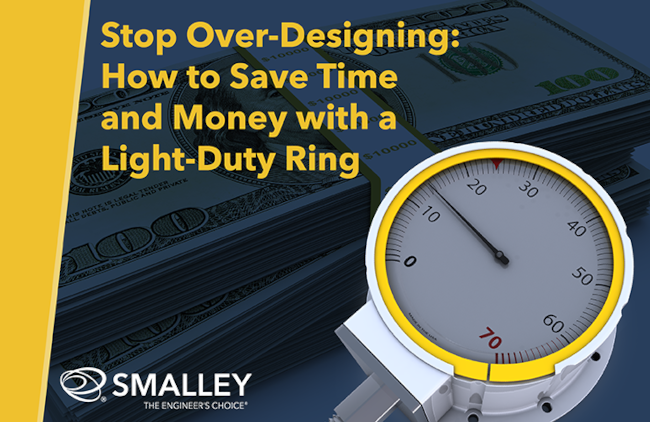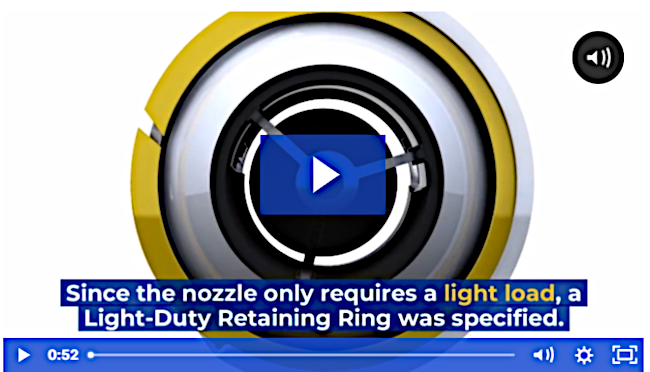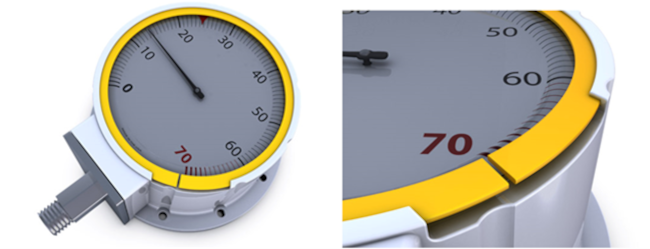
Stop Overdesigning: How to Save Time and Money with a Light-Duty Retaining Ring
Laura Burgess
General Power Transmission Machine Building
Sponsored by Smalley
For light loads, light-duty retaining rings may be more cost-efficient than snap rings.
 If you’ve ever had to hold mating components of assemblies in place, you’ve probably used a retaining ring.
If you’ve ever had to hold mating components of assemblies in place, you’ve probably used a retaining ring.
Retaining rings are a popular fastening choice, as they are compact and eliminate complex machining processes compared to other fasteners.
Selecting the right retaining ring for your application is important to minimize your costs, application size, and assembly time.
This article will discuss over-designing and share helpful tips on streamlining your design to save time and money.
What is load capacity, and why is it important?
Let’s start by defining load capacity, also referred to as thrust capacity. Load capacity is the maximum force that can be applied to a retaining ring without failure. Knowing your ring’s load capacity is important and even critical in some cases because it can affect your application’s function, reliability, and safety. If your application requires a high load capacity, but you select a ring with a low load capacity, the ring may come out of the groove.
Additionally, if your design requires light loads but you select a ring with a high load capacity, the ring might be too big for the application, difficult to install, and most likely, you paid more than you needed to get the job done.
Your application determines the load capacity
Your load capacity will vary depending on your application. If you plan on using a retaining ring in a semi-truck transmission or a downhole drilling tool, your load capacity requirements will be much higher than in an air nozzle or a pressure gauge. See the application details below.

The video above shows how the light-duty, single-turn retaining ring is a cost-effective solution for an air nozzle on airplanes that requires only a light load. The light-duty ring fits tightly into the groove of the plastic air vent housing. Its angle ring ends are designed to be close together, providing nearly complete, 360-degree support.

A light-duty, single-turn retaining ring installed in a shallow groove exerts light pressure on the glass lens in this pressure gauge. This economical design provides the optimum load at all points along the circumference without breaking the glass.
Is bigger better for retaining rings?
We’ve all heard the term, bigger is better, but how does it apply to retaining rings? In general, the bigger (heavier) a retaining ring’s cross-section is, the higher its load capacity. This is where we sometimes see customers over-design their application by selecting a retaining ring with a much higher load capacity than their application requires.
What is the disadvantage of using a retaining ring rated for a higher loading capacity?
It’s just design overkill if your application doesn’t require it.
If your application doesn’t have high impact or thrust loads, heavier duty rings are more expensive, heavier, and harder to install and remove, therefore wasting your time and money. Why pay for the high thrust capacity of a heavy-duty retaining ring when it is not a requirement, and the application can operate as designed with lighter loads?
What retaining ring should I use for light-duty applications?
We’ve created a Light-Duty Retaining Ring Series (VH and VS, Imperial / VHM and VSM, Metric) specifically designed for light-duty applications. In these low clearance applications, axial positioning rather than load carrying is the primary function.
The Light-Duty Retaining Rings are:
- Ideal for light loads and low clearance applications
- Economical – down to half the cost of a snap ring
- Easy to install and remove compared to a heavier duty ring
- Customizable – design what you need with No-Tooling-Charges™
Light-Duty Retaining Rings are in stock from ¼-inch to 10 inches (6mm to 300mm) in carbon and stainless steel.
Overview
-
- Knowing the load capacity of your ring and the application will help you select the right retaining ring.
- If your application doesn’t have high impact or thrust loads, heavier duty rings are more expensive, heavier, and harder to install and remove, therefore wasting your time and money.
- Smalley’s Light-Duty Retaining Ring Series (VH and VS, Imperial / VHM and VSM, Metric) is the ideal solution for light-duty applications because they are economical, light-weight, easy to assemble, and customizable.
- If you have a light-duty application, request FREE Samples of our light-duty series.
- Not sure what ring is right for your application? Talk to a Smalley Engineer!
